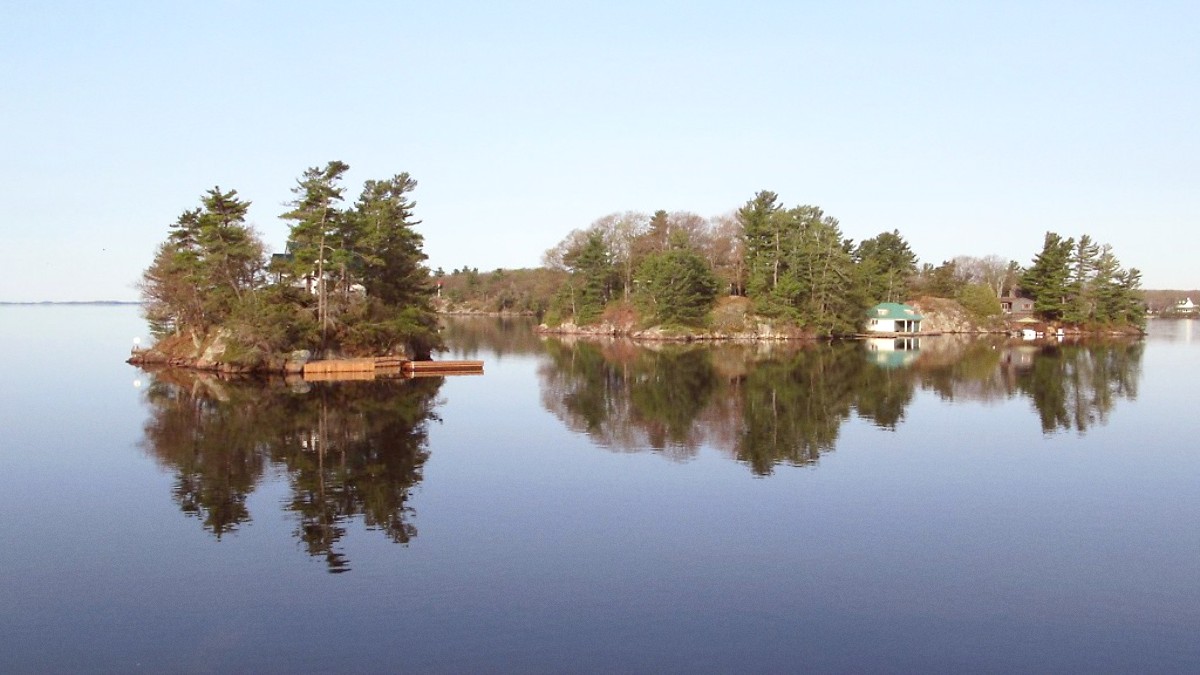
Canada
You can tour an iconic castle, hike trails within a national park, or fish in some of North America's best freshwater spots. The region's appeal lies in its ability to cater to different interests, all within a setting of exceptional natural beauty. Get ready to learn about a place that combines relaxation with engaging activities, perfect for lasting memories.
The Thousand Islands region is a place of natural beauty and historical depth. Its distinct character comes from the interplay of land and water, crafting a varied environment.
Every bend in the river unveils a new vista, inviting visitors to discover a mosaic of islands. This destination truly lives up to its name, promising exploration and unforgettable moments.
The Thousand Islands features 1,864 islands. These islands span the Canada-United States border within the Saint Lawrence River. The river departs the northeastern corner of Lake Ontario, flowing towards the Atlantic Ocean. This island chain stretches for approximately 80 kilometers (50 miles) downstream from Kingston, Ontario, creating a natural border between two nations.
The Canadian Thousand Islands mainly occupies Ontario. Towns within this section include Gananoque, Brockville, and Rockport. Kingston, while not directly among the islands, functions as a significant gateway city. Islands vary greatly; some span over 100 square kilometers (40 square miles), vast enough for communities. Others are small rock outcroppings, barely larger than a room, sometimes home to a solitary residence or uninhabited. A local rule for counting an island defines it as having at least one square foot of land above water year-round and one live tree. This definition accounts for the high number of islands.
Distinct rock structures form the islands' foundation, remnants of ancient geological processes.
Dense pine forests cover larger landmasses, contrasting with the river's blue waters.
The area hosts various bird species, including osprey and bald eagles, alongside basking turtles. River waters teem with fish.
The Canadian Thousand Islands forms part of this UNESCO site, connecting the Canadian Shield to the Adirondack Mountains.
Waters are clear and deep in many places, suitable for large ships. Numerous islands create intricate channels for smaller boats.
The Frontenac Arch Biosphere Reserve, an UNESCO designation, recognizes the unique ecological and geological importance of this area. This land bridge connects the Canadian Shield to the Adirondack Mountains, supporting species migration and biodiversity. The biosphere reserve designation promotes sustainable development and conservation, preserving the islands' beauty for generations.
The Saint Lawrence River offers varying currents, with calm stretches for paddling and dynamic areas for boating. Its fresh water provides refreshing swims in designated summer areas. The unique geography creates a dynamic and ever-changing landscape, with new vistas and hidden coves for water explorers.
This insight into the vast number of islands in the archipelago offers a fascinating detail for discussions with locals.
They used the intricate network of waterways for trade, travel, and sustenance. The Saint Lawrence River served as a highway, connecting distant communities and offering rich fishing grounds. The islands themselves likely held spiritual significance and offered secluded places for gathering or refuge. Archaeological discoveries in the broader region show a long human presence, with evidence of ancient campsites and trade routes.
In the 17th and 18th centuries, the Thousand Islands became a critical route for the growing fur trade. The numerous islands offered natural hiding spots and strategic points along the waterway, making control of the river useful for commercial and military dominance.
The region turned into a strategic battleground during the War of 1812. Control of the Saint Lawrence River was important for both British North America and the United States. Skirmishes and naval engagements took place among the islands, with remnants of this conflict visible today. The war solidified the border weaving through the islands, adding an unique cross-border element.
A dramatic change occurred in the late 19th and early 20th centuries. The Thousand Islands became a popular summer retreat for the wealthy elite. They built grand mansions and castles on many islands, reflecting the prosperity and architectural styles of the time. Boldt Castle and Singer Castle are prime examples, drawing visitors from both nations.
The Thousand Islands International Bridge, completed in 1938, further strengthened cross-border ties and improved regional access. This engineering feat facilitated travel between the Canadian and American sides, boosting tourism and commerce. Today, the bridge symbolizes the shared history and natural beauty of this international destination.
While Boldt Castle and Singer Castle are on the American side, boat tours from Canada often cruise by them, intertwining their stories with the Canadian Thousand Islands experience.
On the Saint Lawrence River, straddling the Canada-United States border, mainly in Ontario, Canada.
Gananoque, Brockville, and Rockport. Kingston serves as a nearby travel hub.
Distinctive granite islands, expansive freshwater river, diverse flora and fauna. Part of the UNESCO Frontenac Arch Biosphere Reserve.
The Thousand Islands is an unique cross-border natural landscape.
It is a place where two nations share a spectacular natural wonder.
The region weaves together shared histories and natural beauty.